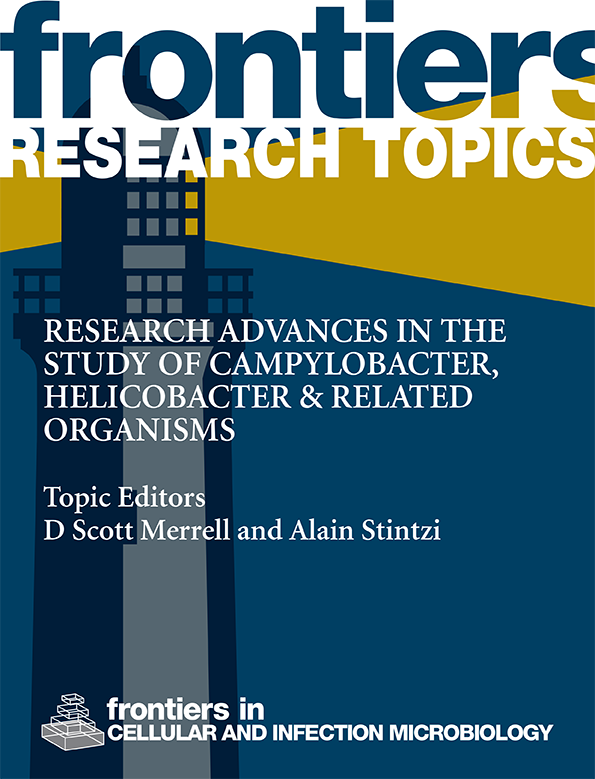基于 RPA-CRISPR/Cas12a 的快速、超灵敏肺炎克雷伯菌检测双读出平台
IF 4.8
2区 医学
Q2 IMMUNOLOGY
Frontiers in Cellular and Infection Microbiology
Pub Date : 2024-06-27
DOI:10.3389/fcimb.2024.1362513
引用次数: 0
摘要
肺炎克雷伯氏菌(Kp)是医院感染的主要病原体,但目前的检测方法无法快速方便地识别Kp。重组酶聚合酶扩增(RPA)是一种快速便捷的等温扩增技术,而聚类规则间隔短回文重复序列(CRISPR)系统可以快速扩增 RPA 的信号,提高其检测限(LOD)。本研究针对 Kp 的 rcsA 基因设计了三对 RPA 引物,通过 CRISPR/Cas12a 单链 DNA 报告裂解扩增 RPA 信号,最后利用荧光检测(FD)和侧流检测条(LFTS)分析裂解信号。结果表明,RPA-CRISPR/Cas12a平台可以特异性鉴定11种常见临床病原体的Kp。FD和LFTS的LOD分别为1 fg/μL和10 fg/μL。在临床样本检测中,RPA-CRISPR/Cas12a平台与培养法和qPCR法一致,其灵敏度和特异性分别为100%(16/16)和100%(9/9)。RPA-CRISPR/Cas12a平台具有检测速度快、简便、准确等优点,有望成为临床早期检测Kp的便捷工具。本文章由计算机程序翻译,如有差异,请以英文原文为准。
A rapid and ultra-sensitive dual readout platform for Klebsiella pneumoniae detection based on RPA-CRISPR/Cas12a
The bacterium Klebsiella pneumoniae (Kp ) was the primary pathogen of hospital-acquired infection, but the current detection method could not rapidly and conveniently identify Kp . Recombinase polymerase amplification (RPA) was a fast and convenient isothermal amplification technology, and the clustered regularly interspaced short palindromic repeats (CRISPR) system could rapidly amplify the signal of RPA and improve its limit of detection (LOD). In this study, we designed three pairs of RPA primers for the rcsA gene of Kp , amplified the RPA signal through single-strand DNA reporter cleavage by CRISPR/Cas12a, and finally analyzed the cleavage signal using fluorescence detection (FD) and lateral flow test strips (LFTS). Our results indicated that the RPA-CRISPR/Cas12a platform could specifically identify Kp from eleven common clinical pathogens. The LOD of FD and LFTS were 1 fg/μL and 10 fg/μL, respectively. In clinical sample testing, the RPA-CRISPR/Cas12a platform was consistent with the culture method and qPCR method, and its sensitivity and specificity were 100% (16/16) and 100% (9/9), respectively. With the advantages of detection speed, simplicity, and accuracy, the RPA-CRISPR/Cas12a platform was expected to be a convenient tool for the early clinical detection of Kp .
求助全文
通过发布文献求助,成功后即可免费获取论文全文。
去求助
来源期刊

Frontiers in Cellular and Infection Microbiology
IMMUNOLOGY-MICROBIOLOGY
CiteScore
7.90
自引率
7.00%
发文量
1817
审稿时长
14 weeks
期刊介绍:
Frontiers in Cellular and Infection Microbiology is a leading specialty journal, publishing rigorously peer-reviewed research across all pathogenic microorganisms and their interaction with their hosts. Chief Editor Yousef Abu Kwaik, University of Louisville is supported by an outstanding Editorial Board of international experts. This multidisciplinary open-access journal is at the forefront of disseminating and communicating scientific knowledge and impactful discoveries to researchers, academics, clinicians and the public worldwide.
Frontiers in Cellular and Infection Microbiology includes research on bacteria, fungi, parasites, viruses, endosymbionts, prions and all microbial pathogens as well as the microbiota and its effect on health and disease in various hosts. The research approaches include molecular microbiology, cellular microbiology, gene regulation, proteomics, signal transduction, pathogenic evolution, genomics, structural biology, and virulence factors as well as model hosts. Areas of research to counteract infectious agents by the host include the host innate and adaptive immune responses as well as metabolic restrictions to various pathogenic microorganisms, vaccine design and development against various pathogenic microorganisms, and the mechanisms of antibiotic resistance and its countermeasures.
 求助内容:
求助内容: 应助结果提醒方式:
应助结果提醒方式:


